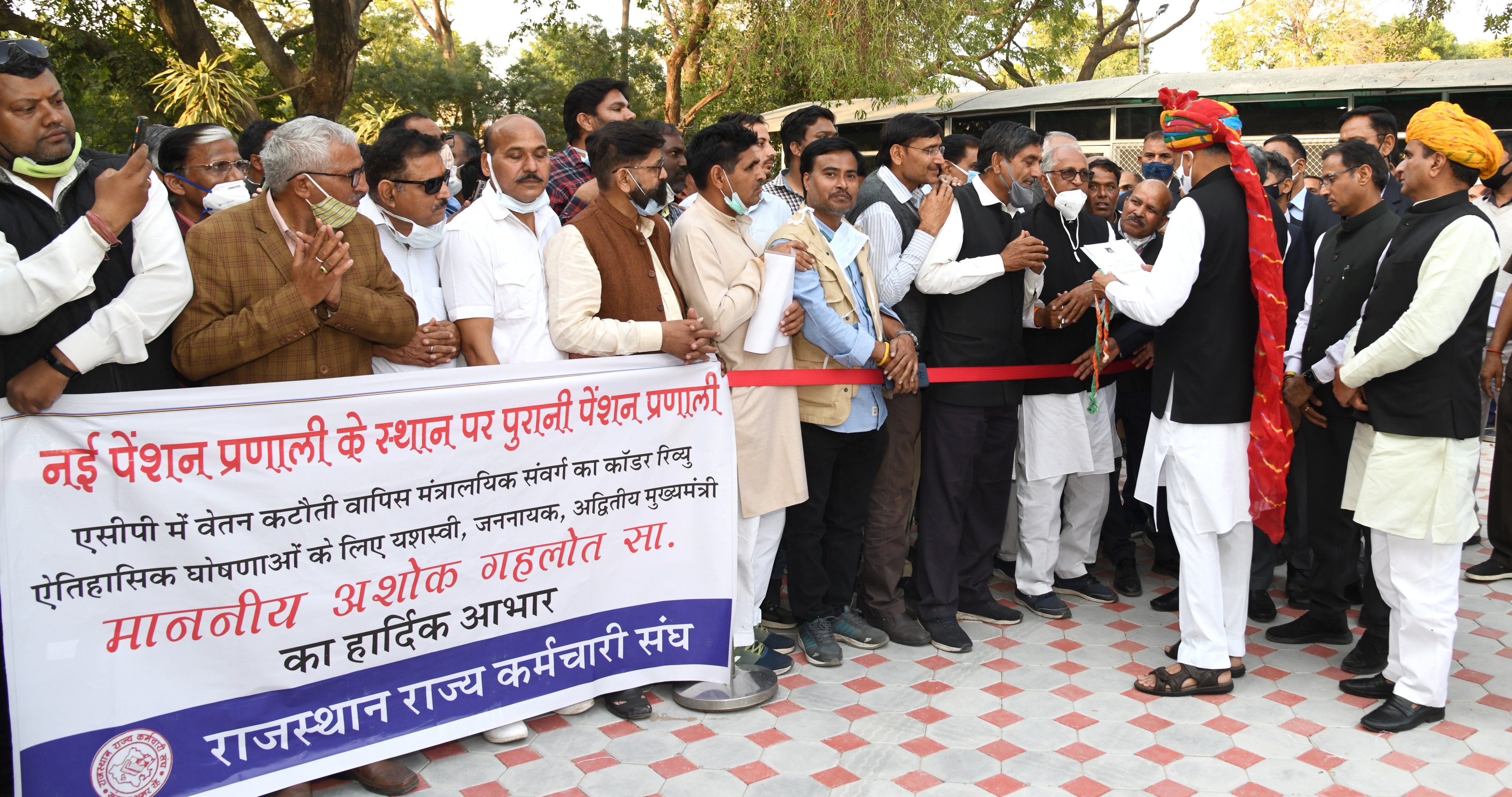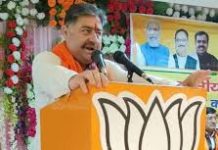
Following Rajasthan CM Ashok Gehlot’s announcement to replace NPS with the old pension scheme in the state, employees’ bodies will pressurisetheir respective governments to follow suit. The SAD and SP have already promised to implement OPS if they are voted to power, reports Sunny Sharma
Today, every state has a New Pension Scheme, except West Bengal. However, when Shiromani Akali Dal announced that, if elected, the government in Punjab would restart the pre-2004 pension scheme for state government employees, it was taken with a pinch of salt. Soon thereafter, Samajwadi Party and Bahujan Samaj Party announced in Uttar Pradesh that they too would revive the old pension scheme if voted to power. However, it was dismissed as a political rhetoric by many until the Rajasthan Government announced to replace the new pension scheme with the old pension scheme. NPS versus OPS, a report by Sunny Sharma
The Shiromani Akali Dal President Sukhbir Singh Badal has said, “We are committed to restarting the old pension scheme as demanded by the government employees. We have taken into consideration all financial aspects of restarting the scheme immediately after the formation of the government.” He said, simultaneously, all anomalies of the Seventh Pay Commission would be removed and that all contractual employees would be regularized. He also announced that the party was committed to the establishment of an Employees Welfare Board which would take up all pending issues of government employees and resolve them at the earliest. He said employees should have faith in the SAD as the party has a track record of all promises made to employees, including the establishment of successive pay commissions. In Punjab, Akali Dal has fought this election in alliance with Bahujan Samaj Party.
An IAS officer of Haryana cadre, Prabhjot Singh has raised the issue of Old Pension Scheme (OPS) for employees on Twitter. A 2010 batch IAS officer, Singh tweeted on Wednesday, “All governments of our country must bring all MPs and MLAs in NPS (New Pension Scheme) introduced in… (2004) or convert all employees to OPS… An employee serves for 30-35 years & is given NPS while an MP n MLA even after serving 1 day after oath is eligible for proper pension.”
In a subsequent tweet, he added, “Moreover there should be a bar on MPs MLAs drawing both pensions simultaneously. There are ex MLAs drawing 2 lakh per month pension despite they were elected way back. They might have set up businesses & settled down. Fiscal deficit should be seen for all and not only for employees.” Prabhjot Singh’s Twitter account mentions “views expressed are personal”. A former scientist of ISRO, Singh is currently MD of National Health Mission Haryana.
The tweets came hours after Rajasthan Chief Minister Ashok Gehlot announced the implementation of the Old Pension Scheme (OPS) for state government employees appointed after January 1, 2004. Gehlot said the contributory pension announced under the National Pension Scheme for those joining after this date had led to insecurity among government employees. “We want them to feel secure so that they can contribute towards good governance,” he said.
The employee leaders in Haryana said the announcement by the Rajasthan CM is bound to put a pressure on the state government to take a similar decision as it is the main demand of the employee unions in the state. The demand is getting momentum because the employees recruited after 2004 will start retiring in coming years and won’t be able to get benefits of the Old Pension Scheme.
Explaining their preference for the Old Pension Scheme, an employee leader Vijender Dhariwal said: “After retirement, a government employee gets 50% of basic salary along with the facility of regular DA (dearness allowance) and medical allowance from the government. On the other hand, the New Pension Scheme is a contributory scheme of the employee and the employer (government or private organization). In the case of the government employees, there is a contribution of 10% of the employee’s basic salary and the DA while 14% of the employee’s salary and DA is contributed by the government for the pension scheme. This money is invested in the stock market where there is no guarantee of better returns.
Trigger for OPS
For quite some time employees unions have been demanding restoration of the old pension system. Most of the government employees have been campaigning to restore the old pension system (OPS) since the implementation of the National Pension System in the year 2004, about 17 years ago.
What has led to a debate is an announcement by Rajasthan Chief Minister Ashok Gehlot announced in the Budget session that those who joined the state government services from January 1, 2004, would be covered under OPS from next financial year. Gehlot in his Budget speech said that NPS has created a sense of insecurity among the employees who have joined the state government from April 1, 2004. Gehlot had said that the step to switch to NPS was probably taken due to the financial burden that OPS created on the government.
For the record, those who joined government service from January 1, 2004 are covered under NPS. Under NPS the government and employees contribute an equal portion of funds which are invested in debt or equities according to employee’s choice and given guidelines. This is quite different from OPS where employees on their retirement used to get a portion of his last drawn salary, usually 50 per cent, as pension with dearness relief linked to inflation announced every 6 months.
Defence personnel getting OPS
The Old Pension Scheme for the government employees, except for defence personnel, was replaced with the Contributory Pension System of New Pension Scheme (now called National Pension System) from January 1, 2004 and the employees, who joined on or after that date, need to make mandatory contributions every month from their salary to the NPS for pension purpose.
While employees contribute 10 per cent of their Basic Salary and Dearness Allowance (DA) every month, the government also used to make equal contributions. Although employers’ mandatory contributions may exceed 10 per cent, the excess contributions will be taxable in the hands of employees, except for Central Government employees, for whom the tax-free employer’s contribution limit is 14 per cent.
NPS versus OPS
It is very important to know what is the difference between the two pension systems. Most government employees consider the old pension system to be better because it gives them more confidence. Before the implementation of NPS in January 2004, when a government employee retired, his pension was fixed equal to 50 percent of his last salary. Whether it is 40 years of job in OPS or 10 years, the amount of pension was decided by the last salary, that is it was the Definitive Benefit Scheme.
In contrast, NPS is a Definitive Contribution Scheme, that is, the pension amount depends on the number of years the job has been done and the annuity amount. A fixed amount is contributed every month under NPS. On retirement, 60 percent of the total amount can be withdrawn in a lump sum and the remaining 40 percent has to be purchased from the insurance company’s annuity plan, on which the interest amount is given as pension every month. In NPS, 10 percent of the basic salary and DA of the state government employee is deducted and the same amount is also given by the state government. However, in the case of central employees, the central government contributes 14 percent. Many workers have not adopted it in protest against NP
Those appointed prior to January 2004 get their post-retirement amounts through a pension plan, which defines the benefit type. There is a monthly payment, which is equal to fifty percent of the last drawn salary. Minimum payment to retired employees as pension through this old scheme is rupees 3,500. Those above the age of eighty get an additional pension in the range of twenty and a 100% of basic pensions.
Besides there is also dearness relief, based on the All India Price Index for Consumers. Presently this is sixty-five percent of individual pensions. Again, there is a medical allowance fixed, which deals with expenditure related to health care. Much of this however does not remain under the NPS. These are two completely different pension systems. The basic difference between the old and the new scheme is that while the earlier system was defined, the new one is totally based on investment returns along with accumulations until retirement age, annuity type and its levels.
Other benefits under OPS
Government servants on retirement are eligible for death-cum-retirement gratuity. In order to get this one-time lump sum benefit it is essential that the employee goes through a minimum five years of qualifying service. The gratuity amount is one-fourth of the basic employee salary and the dearness allowance that you draw prior to retirement for each half-yearly period related to your qualifying service. Maximum payable retirement gratuity is sixteen times the basic pay subject to the maximum ceiling of Rs 10 lakhs.











